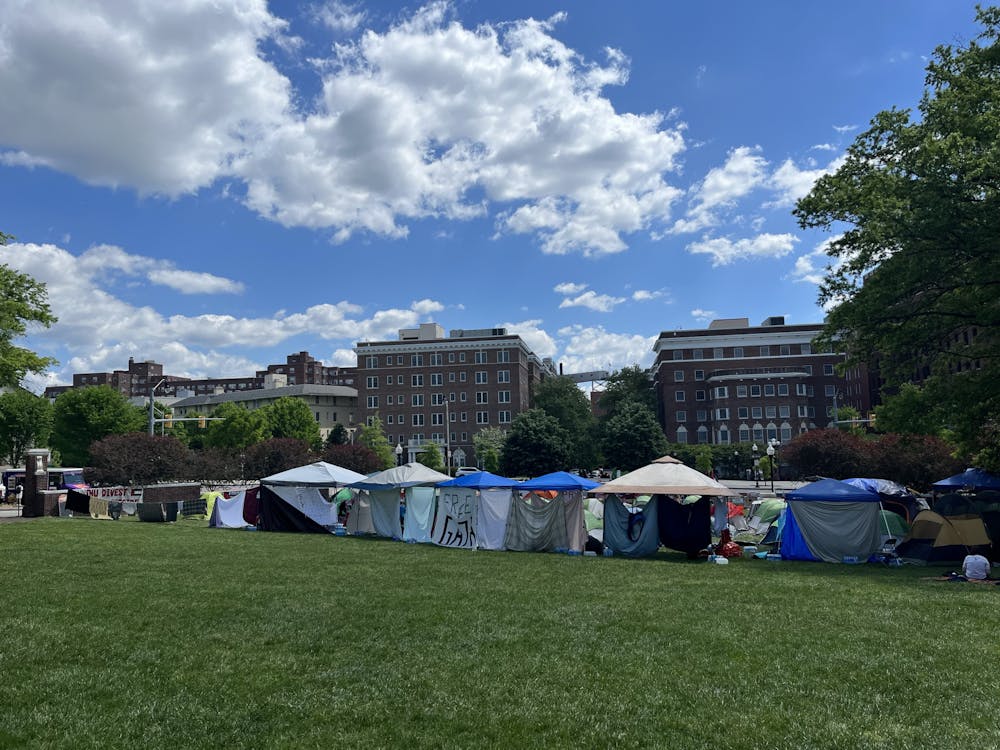The Barnstormers took a risk when they decided to stage Twelve Angry Jurors as their fall production.
It is an insightful work of theater, not meant for casual consumption. There are many challenges that come along with the nature of the play. Because the plot centers around jurors deliberating the verdict of a homicide, the actors must rise to the challenge of creating dimensional characters — and The Barnstormers succeeded in doing so.
The play begins when the recorded voice of a judge (irector David Gram) announces that a 17-year-old boy is on trial for supposedly killing his father and that the fate of his life rests upon the decision of 12 jurors.
Everyone is led to believe that it’s an open and shut case — the boy’s a troubled, violent child; a woman living across the street saw the boy in the act across the train tracks; and an old man living in their apartment heard a body fall, rushed to his front door and saw the boy run down the stairs — or so they say.
Every juror enters the decision room with distinctive personalities and backstories.
None of them want to be there and none of them like each other.
One man (senior Jeremy Dolinko) has been neglected by his own teenage son, and is thus prejudiced against wayward sons. Another (junior Brandon Epstein) came from the slums and has experience with violent crimes. Yet another juror (freshman Utkarsh Rajawat) is an Indian immigrant, and brings the perspective of an outsider as well as its associated stigmas to the trial.
Their assessment of the situation is dramatically impacted by these experiences. Even though they try to be nonbiased, their past comes out in one way or another, leading the audience to question if jurors are truly unbiased in real life.
Each actor portrays their character very well, embodying the social class that they come from.
One woman, Juror 8 (junior Jen Diamond), is the sole dissident. She has an inkling of a reasonable doubt, and the courage to stand up for her opinion. Even when others are screaming at her, and in one instance, even threatening physical violence, she never backs down. She manages to gradually bring the others to her side with her logical explanations of the holes in the witnesses’ testimonies.
Intensity is inherent to the role itself, and Diamond isn’t afraid to play with fire. Her consideration for the fate of the person on trial is genuine and real.
Yet with 12 actors constantly on stage, it is difficult for each of them to stand out and establish their own niche within the context of the play. It was difficult for the audience to remember the characters with more subdued personalities or fewer lines.
The actors performed on a minimal set consisting of a long rectangular table illuminated by a few swinging lights. Four sets of risers accommodated the audience on all four sides of the stage, establishing the grave atmosphere necessary for a room for jurors to deliberate in.
An unfortunate byproduct of this setup, however, was that at any given moment an actor would have his back to the audience. Intense emotional displays were lost to the one-fourth of the audience that was caught on the unlucky side.
“Twelve Angry Jurors” is a pertinent show to produce right before the presidential elections, since it emphasizes the power and importance of democracy. The boy on trial had the right to a fair trial, which he received despite the misgivings of many of the jurors, reminding the audience of how important it is to make independent decisions. Though it may be difficult to be the voice of dissent, as Juror 8 discovered, a difference of opinions is healthy, even essential, as evidenced by the verdict of the jury.
















Please note All comments are eligible for publication in The News-Letter.